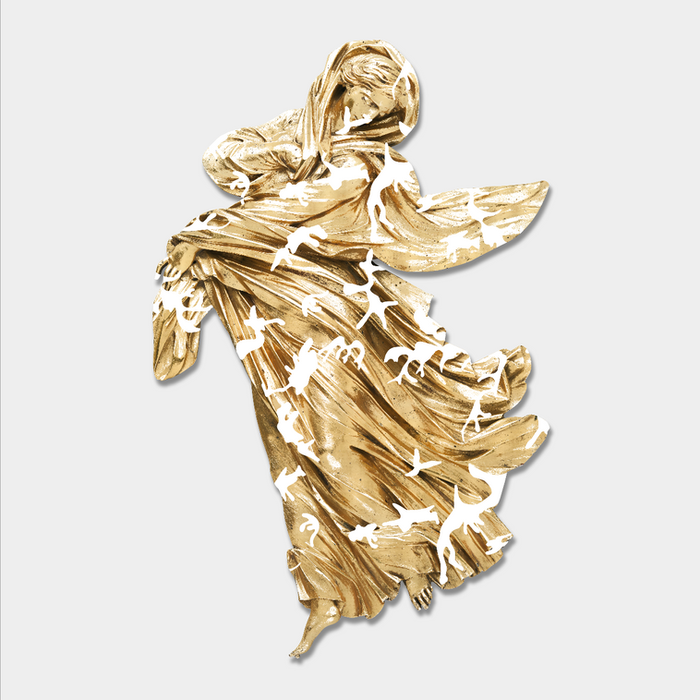
The History of The Future - Magnus Gjoen
Published on:THE HISTORY OF THE FUTURE was Magnus Gjoen's long-awaited new solo show, where he exhibited brand new prints, sculptures and original pieces exploring themes of life, love, death and art.
WAR AND PEACE
Across his oeuvre, Gjoen is known for taking ancient works of art and transforming them in the name of exploring the thin lines between life and death, delicacy and destruction, beauty and violence.
“There’s a great quote you might remember from George Orwell’s ‘1984’, who controls the past controls the future. The way I see it, war and conflict pose the greatest threats to our past, and art often becomes the battleground on which cultural wars are won and lost. It’s these themes which are central to the new show.”
“In using motifs and symbols traditionally associated with war or its aftermath, such as camouflage, weaponry, Roman ruins and broken statues, I am encouraging the observer to consider the fragility of our past and how it’s up to us to preserve it for future generations.”

CONTEMPORARY ARCHEOLOGY
Another central theme of the show is the exploration of light in the face of destruction.
“I hope the show makes people consider fragments of the past in a new light. Contemporary art is not just about the past – it’s a combination of the past and the future.”
The show sees Gjoen play around with the Roman busts and columns we’ve seen in previous works, injecting contemporary pops of colour or overlaying them with camouflage patterns to reference the kind of war paint we see on soldiers or used by tribes.
Magnus explains:
“I’ve used camouflage to fill in the missing fragments of the artwork. For example, my series of sculptures of classical columns take on powerful new meaning when juxtaposed with the tail of a bomb – this is a reference to the frequent destruction of historical sights, and our need to protect them.”
“The pieces are intended as graphic fragments of history still to be written. I’ve selected these busts and columns so they are seemingly drawn directly from an archaeological site. By covering them with camouflage, I’m suggesting the need to conceal and protect these treasures from the past, so that they won’t be destroyed in the future.”

